Are you looking to streamline your business communications with an Electronic Data Interchange (EDI) agreement? Implementing EDI can significantly enhance efficiency, reduce error rates, and foster stronger partnerships. In this article, we'll guide you through the essential components of a robust EDI agreement, ensuring you set the right framework for seamless digital transactions. So, let's dive in and explore the key elements you need to know!
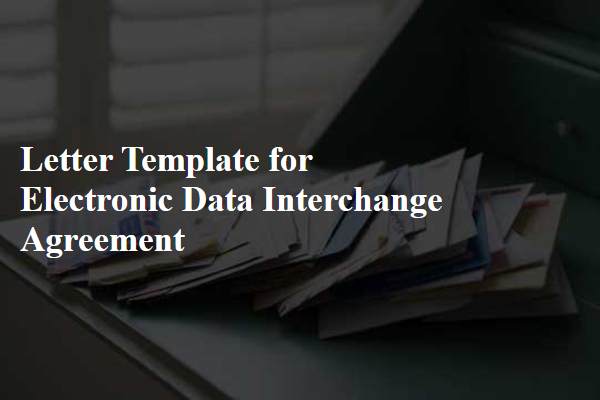
Parties Involved
An electronic data interchange (EDI) agreement is a formal arrangement between two or more entities, typically businesses, engaged in the exchange of electronic documents. This agreement involves critical parties such as the sending party, responsible for initiating the transfer of documents like invoices and purchase orders, and the receiving party, which interprets and processes these electronic transactions. Key entities may include, for instance, suppliers (business A, located in Texas, specializing in electronic components) and retailers (business B, based in California, operating in consumer electronics), both utilizing EDI systems compliant with standards such as ANSI X12 or EDIFACT for interoperability. Additional parties may encompass technical support vendors providing necessary software infrastructure for seamless data exchange, or regulatory bodies ensuring compliance with data protection regulations like GDPR for European transactions. Understanding each party's roles clarifies responsibilities within the EDI framework.
Purpose and Scope
An electronic data interchange (EDI) agreement establishes a framework for data exchange between parties, such as businesses or organizations. This agreement outlines the purpose of the data exchange, which typically includes improving transaction efficiency, reducing operational costs, and enhancing communication accuracy. The scope encompasses various documents, such as purchase orders, invoices, and shipping notices, exchanged electronically between trading partners. It may specify the technology used, such as AS2 or EDIFACT standards, ensuring compatibility and security. Additionally, the agreement will define responsibilities, such as data ownership, confidentiality, and dispute resolution procedures, promoting a smooth and reliable data exchange process.
Standards and Protocols
Electronic data interchange (EDI) standards facilitate seamless communication between businesses via structured formats. Prominent standards include ANSI X12, primarily used across North America for various sectors, and UN/EDIFACT, which serves a global audience, especially in Europe. Protocols such as AS2 (Applicability Statement 2) ensure secure transmission of these data sets, leveraging encryption and digital signatures for confidentiality. Businesses engaging in EDI must also consider VANs (Value-Added Networks), which act as intermediaries to manage data exchange efficiently. Compliance with these standards and protocols is crucial for achieving interoperability and streamlining supply chain operations.
Confidentiality and Data Security
Electronic Data Interchange (EDI) agreements play a crucial role in establishing protocols for the secure exchange of business data between organizations. Confidentiality (the principle of keeping sensitive information private) is paramount in such agreements, ensuring that proprietary information, trade secrets, and personal data remain protected from unauthorized access. Data security measures (such as encryption and access control) are vital to safeguarding the integrity and availability of the exchanged data. Regulatory compliance (adhering to laws like GDPR or HIPAA) reinforces the importance of protecting customer information while processing electronic transactions. In addition, organizations may outline specific incident response protocols (steps to take in the event of a data breach) to mitigate risks and ensure transparency in the handling of any security violations. Furthermore, the agreement may stipulate the duration of confidentiality obligations, detailing how long the data must be protected after the termination of the contract.
Termination and Amendments
Termination and amendment clauses within an electronic data interchange (EDI) agreement establish the conditions under which parties can end or modify their contractual obligations. Termination can occur due to various reasons such as breach of contract, failure to comply with industry regulations, or mutual consent of both parties. Notification periods, often ranging from 30 to 90 days, provide a timeframe for the parties to resolve disputes or adjust their commitments. Amendments, which may require written consent, allow for updates to data exchange protocols or compliance with new regulatory standards, ensuring the agreement remains relevant in the fast-evolving landscape of digital communication. Proper documentation of these changes is crucial, preserving the integrity and clarity of the EDI relationship.
Letter Template For Electronic Data Interchange Agreement Samples
Letter template of Electronic Data Interchange (EDI) Partnership Agreement
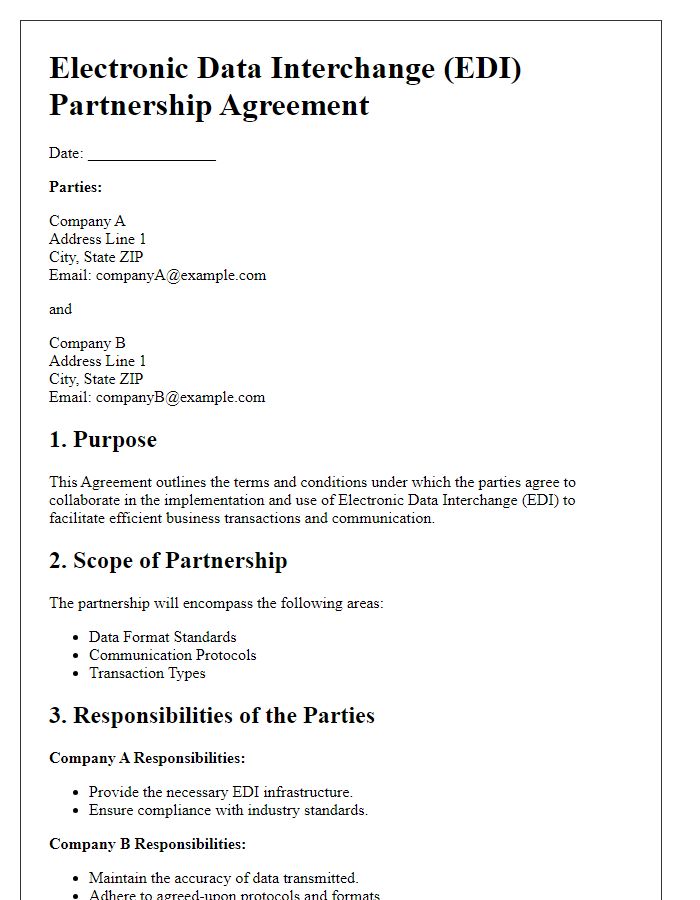

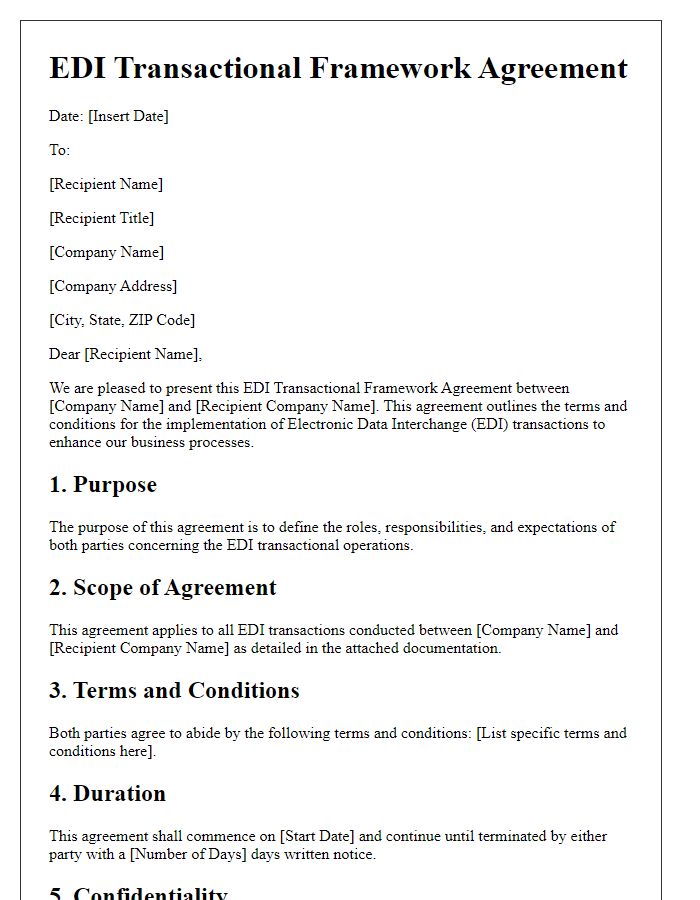
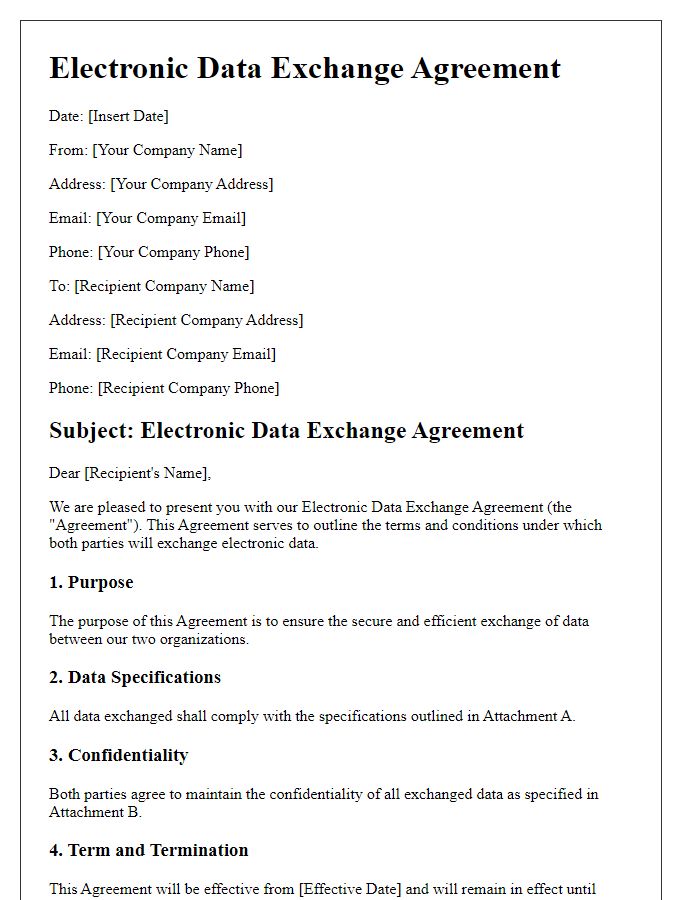
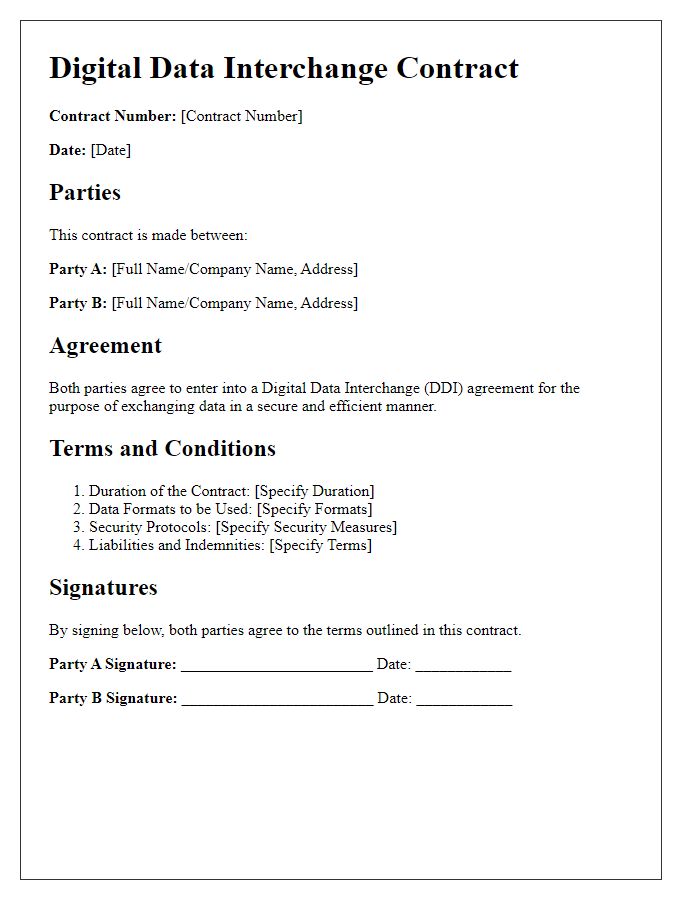
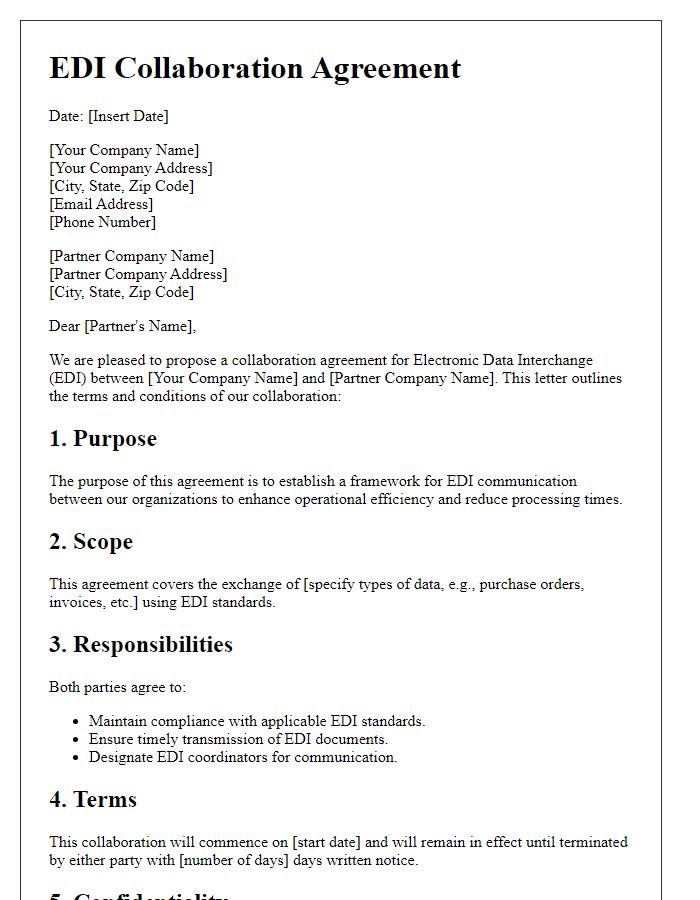
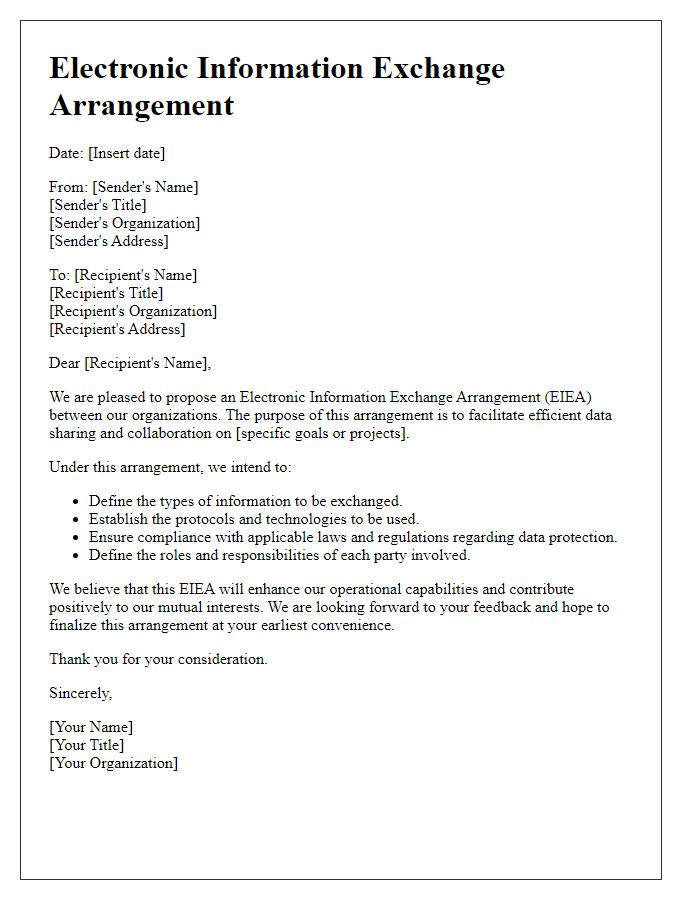
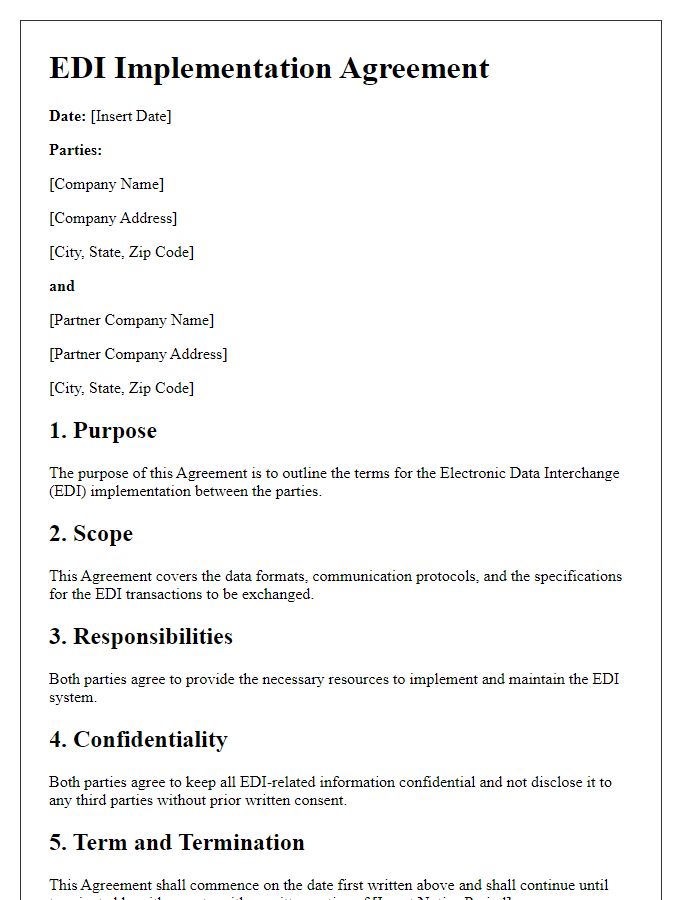
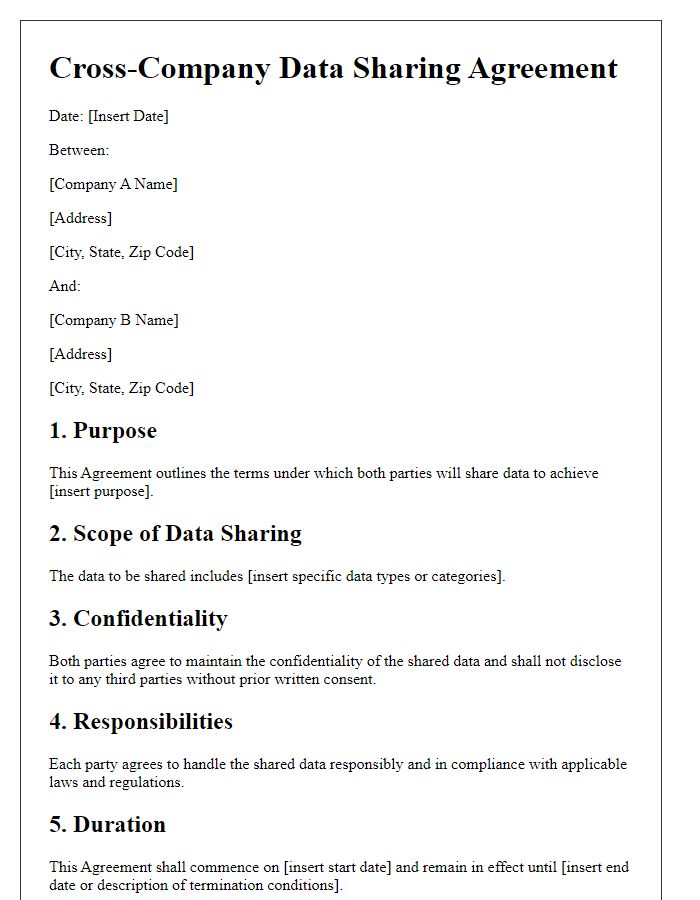
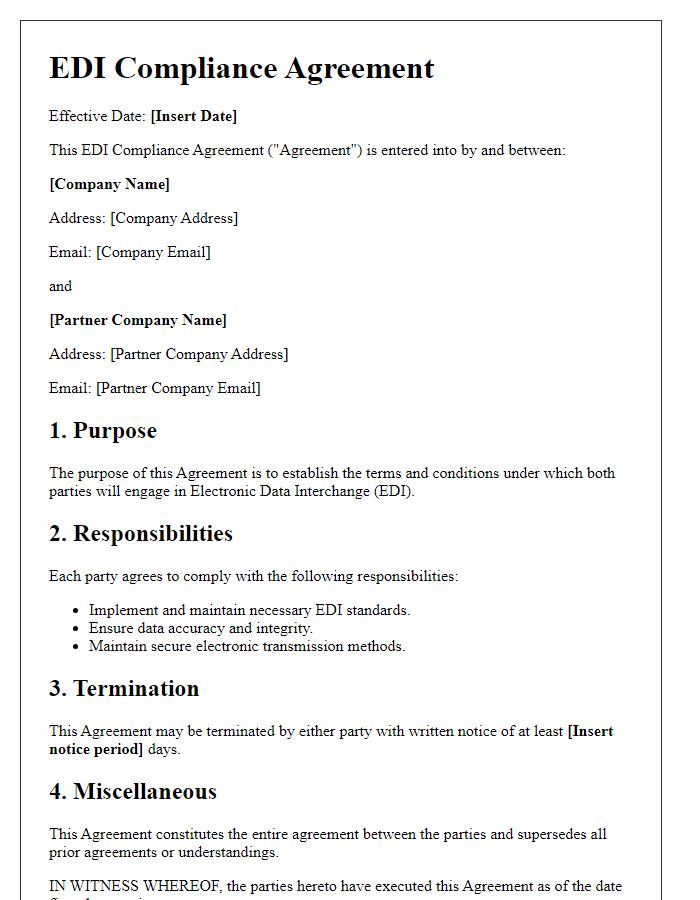
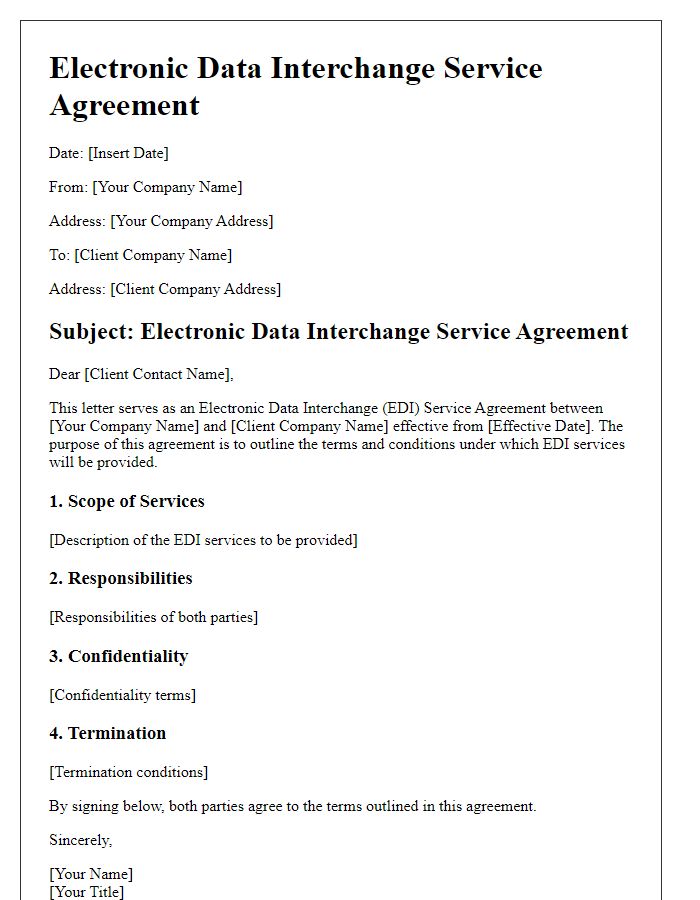


Comments